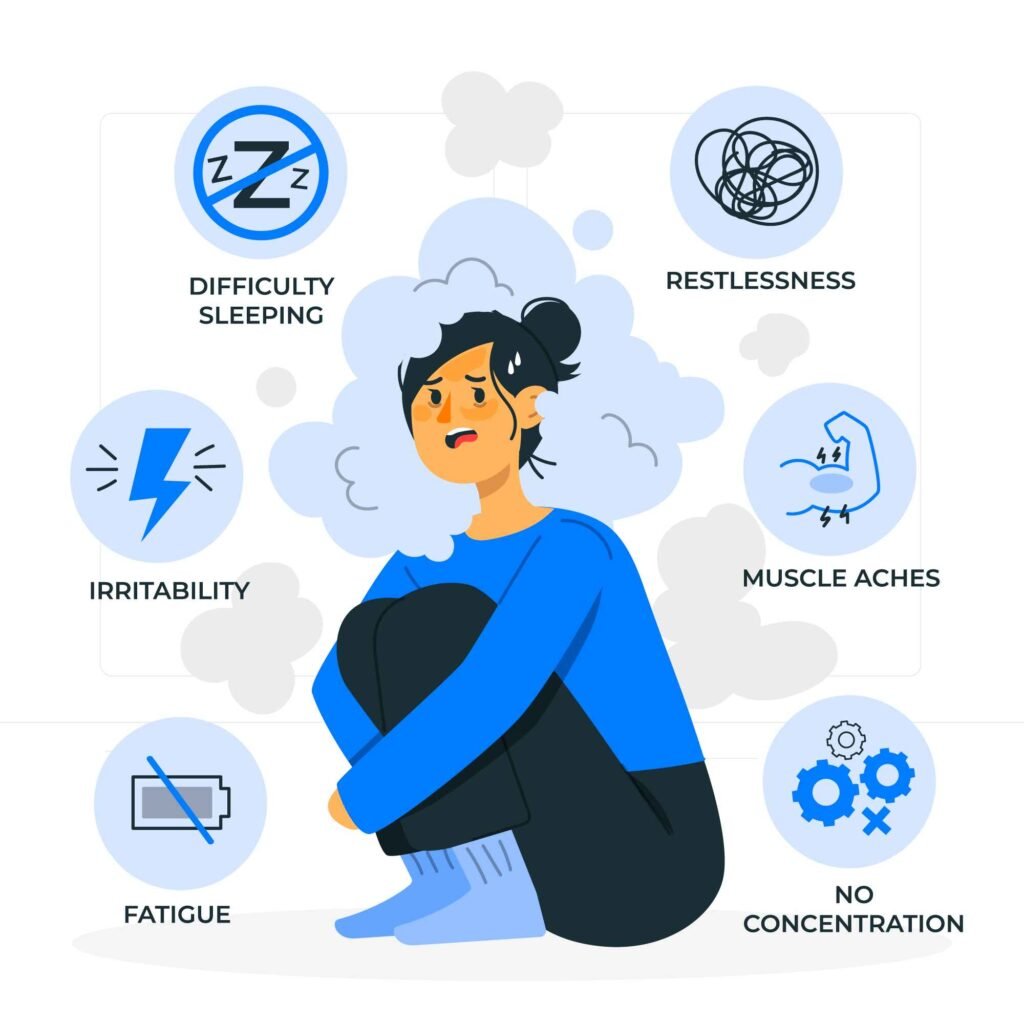
Sustainable Wellness Practices
Sustainable wellness is about integrating habits and practices that benefit both your personal health and the environment. By adopting sustainable wellness practices, you can enhance your well-being while contributing positively to the planet. This guide will help you explore various aspects of sustainable wellness and how to make it a part of your daily routine.
What Is Sustainable Wellness?
Sustainable wellness is a lifestyle approach that balances physical, mental, and environmental health. It focuses on long-term well-being through eco-friendly and mindful practices. Unlike quick-fix solutions, sustainable wellness emphasizes creating habits that are both impactful and enduring.
1. The Foundations of Sustainable Wellness
1.1 Understanding the Mind-Body-Environment Connection
Sustainable wellness begins with recognizing the interconnectedness of your mind, body, and environment. Your mental health affects your physical health, and both are influenced by the surrounding environment. When you prioritize eco-conscious choices, you foster a symbiotic relationship that promotes overall wellness.
1.2 Prioritizing Mental Clarity
Stress and mental fatigue are major roadblocks to sustainable wellness. Incorporating mindfulness practices like meditation, deep breathing, and journaling can help reduce stress while improving focus and emotional resilience.
2. Nutrition for Sustainable Living
2.1 Choosing Organic and Local Produce
Opt for locally-sourced, organic produce to reduce your carbon footprint. These choices support sustainable farming practices, ensure nutrient-dense meals, and minimize exposure to harmful pesticides.
2.2 Reducing Food Waste
Planning your meals and buying only what you need are essential for reducing food waste. Use leftovers creatively and compost organic waste to contribute to a circular food system.
2.3 Embracing Plant-Based Diets
Shifting towards a plant-based diet is one of the most effective ways to support sustainability. Plant-based diets reduce greenhouse gas emissions and require fewer resources compared to meat-heavy diets.
3. Sustainable Fitness Routines
3.1 Outdoor Activities
Engaging in outdoor activities like hiking, biking, or yoga in the park not only boosts physical health but also connects you with nature. These activities often have a lower environmental impact compared to gym-based workouts.
3.2 Minimalist Fitness Equipment
Instead of investing in heavy gym machinery, use minimal equipment like resistance bands or bodyweight exercises. This approach reduces material consumption and is more affordable.
4. Eco-Friendly Personal Care
4.1 Switching to Natural Products
Conventional personal care products often contain harmful chemicals and come in non-recyclable packaging. Opt for natural and biodegradable alternatives to protect both your health and the planet.
4.2 DIY Skincare and Cleaning Solutions
Homemade skincare and cleaning products can be sustainable and effective. For example, make a face mask using oatmeal and honey or a natural cleaner using vinegar and lemon.
5. Sustainable Mindset Practices
5.1 Mindful Consumption
Avoid impulsive purchases and focus on acquiring items that align with your values. By adopting a minimalist mindset, you can reduce clutter and conserve resources.
5.2 Practicing Gratitude
Expressing gratitude fosters mental wellness and helps you appreciate the resources and opportunities available to you. Journaling about what you are thankful for can reinforce positive thinking patterns.
6. Sustainable Home Practices
6.1 Creating a Healthy Living Space
Your home environment plays a crucial role in your overall wellness. Use natural, non-toxic cleaning products to reduce chemical exposure. Open windows regularly to improve indoor air quality and consider adding houseplants like snake plants, peace lilies, or spider plants to purify the air naturally.
6.2 Eco-Friendly Home Upgrades
Investing in sustainable home improvements can benefit both your health and the planet. Consider these upgrades:
- LED Lighting: Energy-efficient bulbs reduce electricity consumption.
- Water-Saving Fixtures: Install low-flow showerheads and faucets to conserve water.
- Insulation: Proper insulation reduces energy waste by maintaining comfortable temperatures year-round.
6.3 Decluttering for Mental Clarity
A cluttered home can lead to stress and mental fatigue. Adopt the “less is more” philosophy by decluttering regularly. Donate items you no longer need, recycle responsibly, and organize your space to promote peace of mind.
7. Sustainable Transportation Choices
7.1 Walking and Biking
Incorporating walking or biking into your daily routine improves physical health and reduces your carbon footprint. These activities also allow you to connect with your surroundings, clear your mind, and enjoy fresh air.
7.2 Public Transportation
Using public transportation like buses, trains, or subways helps lower greenhouse gas emissions and reduces traffic congestion. If possible, opt for electric or hybrid transport options to minimize pollution.
7.3 Carpooling and Ride-Sharing
If driving is necessary, carpooling or using ride-sharing services can make travel more sustainable. These practices reduce the number of vehicles on the road, lowering overall emissions.
8. Sustainable Fashion and Wardrobe Practices
8.1 Choosing Ethical Brands
Support brands that prioritize sustainability and ethical labor practices. Look for certifications like Fair Trade, Organic, or B-Corp to ensure your clothing choices align with your values.
8.2 Building a Capsule Wardrobe
A capsule wardrobe consists of versatile, high-quality pieces that can be mixed and matched. This approach reduces waste and helps you avoid the pitfalls of fast fashion.
8.3 Thrifting and Upcycling
Second-hand shopping and upcycling are eco-friendly ways to refresh your wardrobe. Thrift stores, vintage shops, and clothing swaps offer unique, budget-friendly options while promoting sustainability.
9. Sustainable Digital Wellness
9.1 Reducing Screen Time
Excessive screen time can affect mental health and contribute to digital waste. Schedule regular “digital detox” periods to unplug, recharge, and reconnect with real-world activities.
9.2 Eco-Friendly Digital Practices
Did you know that data storage consumes significant energy? Practice digital sustainability by:
- Deleting Unnecessary Emails: Clearing inbox clutter reduces data storage demands.
- Using Cloud Services Wisely: Opt for cloud providers with renewable energy initiatives.
- Unsubscribing from Unused Services: Eliminate apps and subscriptions you no longer use.
9.3 Mindful Social Media Use
Use social media platforms intentionally to avoid mindless scrolling. Follow accounts that inspire sustainable living and wellness, and engage in positive, uplifting communities.
10. Sustainable Practices in the Workplace
10.1 Green Office Habits
Create a more sustainable workplace by adopting practices like:
- Reducing Paper Use: Go digital whenever possible.
- Recycling Programs: Implement or participate in recycling initiatives.
- Energy Conservation: Turn off lights and electronics when not in use.
10.2 Wellness Initiatives at Work
Promote wellness in your workplace by encouraging:
- Standing Desks: Improve posture and reduce sedentary behavior.
- Wellness Breaks: Short breaks for stretching or meditation enhance productivity and mental health.
- Sustainable Commuting: Incentivize carpooling or biking to work.
10.3 Remote Work and Sustainability
Remote work can reduce environmental impact by minimizing daily commutes. Create a healthy home office space with ergonomic furniture, natural lighting, and eco-friendly supplies.
11. Sustainable Community Engagement
11.1 Supporting Local Initiatives
Get involved in local sustainability projects like community gardens, clean-up drives, or farmers’ markets. These activities foster community spirit and contribute to a healthier environment.
11.2 Volunteering for Environmental Causes
Volunteering for eco-friendly organizations helps amplify your impact. Whether it’s planting trees, educating others, or participating in conservation projects, your efforts make a difference.
11.3 Sharing Knowledge and Resources
Promote sustainable wellness by sharing your experiences and tips with friends and family. Host workshops, write blog posts, or share resources to inspire others to adopt eco-friendly practices.
12. Sustainable Leisure and Travel
12.1 Eco-Conscious Travel Choices
When planning vacations, opt for eco-friendly destinations and accommodations. Look for hotels that prioritize sustainability through energy efficiency, waste reduction, and community support.
12.2 Slow Travel Philosophy
Slow travel focuses on quality experiences over quantity. Spend more time exploring fewer locations to minimize transportation emissions and deeply connect with local cultures.
12.3 Sustainable Hobbies
Choose hobbies that promote wellness and sustainability, such as:
- Gardening: Grow your own herbs and vegetables.
- Nature Photography: Capture the beauty of the outdoors while practicing mindfulness.
- DIY Projects: Create eco-friendly crafts and home decor using recycled materials.
13. Sustainable Self-Care Practices
13.1 Eco-Friendly Skincare Routine
Craft a skincare routine that’s good for both your skin and the planet. Use products with natural ingredients, minimal packaging, and cruelty-free certifications. Brands that use glass, recycled paper, or biodegradable materials reduce plastic waste and environmental harm.
13.2 Minimalist Self-Care
Simplify your self-care by focusing on essential practices that nourish your mind and body. Instead of accumulating multiple products, invest in a few high-quality items. Prioritize practices like meditation, journaling, and exercise, which promote long-term wellness without resource waste.
13.3 Sustainable Beauty Practices
Make small but impactful changes to your beauty routine:
- Reusable Makeup Wipes: Replace single-use wipes with washable, reusable cloths.
- Bamboo Toothbrushes: Switch to biodegradable toothbrushes to cut down on plastic waste.
- Solid Shampoo and Conditioner Bars: These last longer and use less packaging.
14. Sustainable Sleep Habits
14.1 Eco-Friendly Sleep Environment
Optimize your bedroom for a sustainable night’s sleep. Use organic cotton, bamboo, or hemp bedding, which are free from harmful chemicals and produced sustainably. Choose mattresses made from natural latex or other eco-friendly materials.
14.2 Reducing Electronic Use Before Bed
Minimize screen time an hour before bed to improve sleep quality. Excessive blue light exposure disrupts your circadian rhythm. Instead, engage in relaxing activities like reading a book, meditating, or stretching.
14.3 Practicing Sleep Hygiene
Adopt sustainable sleep hygiene practices:
- Natural Sleep Aids: Herbal teas like chamomile or valerian root promote restful sleep.
- Breathable Fabrics: Wear sleepwear made from natural fibers to regulate body temperature.
- Energy-Efficient Lighting: Use dimmable LED lights or candles in the evening to prepare for sleep.
15. Sustainable Stress Management
15.1 Nature Therapy
Spending time in nature reduces stress, improves mood, and promotes mental clarity. Whether it’s a walk in the park, forest bathing, or gardening, nature therapy is a sustainable way to manage stress.
15.2 Mindful Breathing Techniques
Incorporate mindful breathing exercises like the 4-7-8 technique or diaphragmatic breathing to calm your mind. These practices are free, accessible, and effective for reducing anxiety.
15.3 Eco-Friendly Relaxation Practices
Consider these sustainable relaxation methods:
- Aromatherapy: Use essential oils from sustainable sources to reduce stress.
- Meditation Apps with Minimal Energy Use: Choose apps that are designed for low energy consumption.
- DIY Stress Relief Kits: Create a relaxation kit using natural items like lavender sachets, reusable eye masks, and herbal teas.
16. Sustainable Mindset for Lifelong Wellness
16.1 Practicing Gratitude Daily
A sustainable mindset starts with gratitude. Reflect on what you appreciate each day, from the food you eat to the natural resources you use. Keeping a gratitude journal can boost mental health and promote mindful living.
16.2 Embracing Lifelong Learning
Stay informed about new sustainable wellness practices. Follow blogs, podcasts, or YouTube channels that focus on wellness and sustainability. Continuous learning empowers you to make informed choices and inspire others.
16.3 Setting Sustainable Goals
Set achievable goals that align with your wellness and sustainability values. For example:
- Weekly Meat-Free Days: Incorporate more plant-based meals into your diet.
- Plastic-Free Challenges: Try a month-long plastic-free challenge to reduce waste.
- Monthly Nature Outings: Schedule time to connect with nature regularly.
17. Sustainable Financial Wellness
17.1 Ethical Investing
Consider investing in companies that prioritize sustainability, renewable energy, and ethical business practices. Ethical investing supports a healthier planet and can be part of your long-term financial plan.
17.2 Budgeting for Sustainability
Create a budget that reflects your values. Allocate funds for sustainable products, experiences, and practices. Prioritize quality over quantity to reduce unnecessary spending and waste.
17.3 Supporting Local Economies
Shop from local businesses, farmers’ markets, and artisans. Supporting local economies promotes community growth, reduces transportation emissions, and ensures fresh, high-quality products.
18. Teaching Sustainable Wellness to Future Generations
18.1 Educating Children About Sustainability
Involve children in eco-friendly activities like gardening, recycling, and composting. Teach them the importance of conserving resources through fun, hands-on experiences.
18.2 Leading by Example
Children learn by observing. Model sustainable habits such as conserving water, reducing waste, and practicing mindful consumption. These habits will inspire lifelong wellness practices.
18.3 Creating Family Wellness Challenges
Engage your family with sustainable wellness challenges like “Plastic-Free Week” or “No-Screen Sundays.” These challenges promote bonding, creativity, and eco-consciousness.
19. Sustainable Wellness in Everyday Life
19.1 Small Daily Actions That Make a Big Difference
Incorporate these simple sustainable habits into your daily life:
- Bring a Reusable Water Bottle: Reduce plastic waste.
- Carry Reusable Bags: Avoid single-use plastic bags.
- Use Public Recycling Bins: Properly dispose of waste when on the go.
19.2 Balancing Convenience with Sustainability
While modern life offers convenience, strive to balance it with eco-conscious choices. For example, choose reusable coffee cups instead of disposable ones or cook meals at home instead of ordering takeout.
19.3 Reflecting on Your Wellness Journey
Regularly assess your wellness practices and their sustainability impact. Reflect on what’s working, what could be improved, and celebrate your progress.



